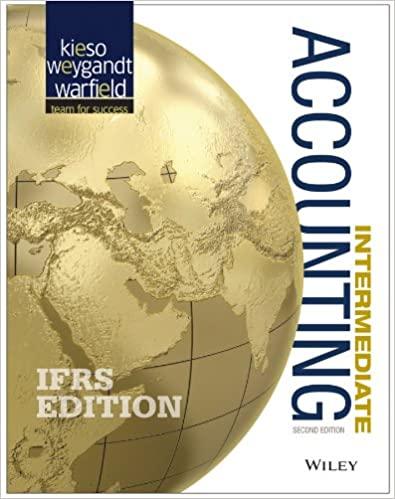15-1 Balance Sheet Equation Sacks Fifth operates 197 fashion specialty retail stores in 28 states. The company's actual data (slightly simplified) follow for its fiscal year ended June 15, 2009 in millions of dollars) Asset beginning of period 55,850 Assets, end of period Liabilities, beginning of period Liabilities, and of period 6,041 Paid-in capital, beginning of period 979 Paid-in capital, end of period Retained comings, beginning of period 495 Retained comings, end of period Revenues RESSO Costs and expenses Net income Dividends Additional investments by stockholders Find the unknown (in millions), showing computations to support your answers 15-2 Analysis of Transactions; Preparation of Statements The Mentha Company was incorporated on July 1, 20X1. Mentha had 10 holders of common stock. Laurie Mentha, who was the president and CEO, held 49% of the shares. The company rented space in chain discount stores and specialized in selling running shoes Mentha's first location was a store in Centerville Mall. The following events occurred during July A. The company was incorporated. Common stockholders invested S145,000 cash. B. Purchased merchandise inventory for cash, 555,000 C. Purchased merchandise inventory on open account, $28.000 D. Merchandise carried in inventory at a cost of S42,000 was sold for $90,000 $30,000 for cash and $60,000 on open account. Mentha carries and will collect these accounts receivable E Collection of a portion of the preceding accounts receivable, $25,000 F. Payments of a portion of accounts payable, $15,000. See transaction C. G. Special display equipment and fixtures were acquired on July 1 for $48.000. Their expected useful life was 48 months with no terminal scrap value Straight-line depreciation was adopted. This equipment was removable. Mentha paid $15,000 as a down Nyment and signed a promissory note for $33,000 H. On July 1, Mentha signed a rental agreement with Centerville Mall. The agreement called for rent of $1,550 per month, payable quarterly in advance. Therefore, Mentha paid $4,650 cash on July 1 1. The rental agreement also called for a payment of 15% of all sales. This payment was in addition to the flat 52,350 per month. In this way, Centerville Mall would share in any success of the venture and be compensated for general services such as cleaning and utilities. This payment was to be made in cash on the last day of each month as soon as the sales for the month were tabulated. Therefore, Mentha made the payment on July 31 J. Wages, salaries, and sales commissions were all paid in cash for all carings by employees. The amount was $30,000 K. Depreciation expense for July was recognized. See transaction G. L. The expiration of an appropriate amount of prepaid rental service was recognized. See transaction . Prepare an analysis of Mentha Company's functions, employing the cution approach demonstrated in Exhibit 15.1 (pg 621). we additional con will be needed, one for Equipment and Fixtures and one for Note Pare Show all I thousands 2 Prepare a balance sheet as of July 31, 20X7, and an income for the month of July were incom Given these spune facts, analyse Mentha's performance for July and in financial position as of July 31, 20X1. 15-3 Cash Basis Versus Accrual Basis Refer to the preceding problem. If Mentha Company measured income on the cash basis, what revenue would be reported for July? Which basis (accruorcash)provides a better measure of revenue? Why? 15-4 Debits and Credits Study Appeadis 15B. Determine for the following transactions whether the account named is parentheses is to be debitor credited Sold merchandise (Merchandise Inventory S1,000 2. Received cash from customers on accounts due (Accounts Receivable). $2,450 3. Paid rent in advance (Prepaid Expenses. $1,250 & Borrowed money from First National Bank (Notes Payable), 512,000 5. Paid dividends (Cash). 5800 6 Delivered merchandise to customers (Merchandise Inventory), 53,500 7. Paid O'Brien Associates $3,000 owed them (Accounts Payable) 8. Bought merchandise on open account (Accounts Payable), $5,400 15-5 Use of T-Accounts Study Appendix 15B. The Tennis Club had the following transactions during June: a. Sold an old computer for $175 cash and a promise to pay $250 in one month. The balance sheet value of the computer was S425 b. Collected $550 of dues in cash that had been billed in May. c. Bought a postage meter on credit for $190. d. Received the $225 promised in transaction a. 1. Set up T-accounts for the following accounts: a. Cash b. Dues Receivable c. Accounts Receivable d. Equipment e Accounts Payable 2 Make entries for each of the four transactions into the T-accounts. Label each entry a, b, c, and d. 15-6 True or False Study Appendix 15B. Use T or F to indicate whether each of the following statements is true or false. For each false statement, explain why it is false. 1. Purchase of inventory on account should be credited to Inventory and debited to Accounts Payable. 2. Increases in asset accounts must always be entered on the right. 3. Increases in stockholders' equity should always be entered as credits 4. Decreases in liability accounts should be recorded on the right. 5. Debit entries must always be recorded on the left. Credit entries can be recorded either on the right or on the left. 6. Money borrowed from the bank should be credited to Cash and debited to Notes Payable. 7. Decreases in accounts must be shown on the credit side. 8. Both increases in liabilities and decreases in assets should be entered on the right. 9. Asset credits should be entered on the right and liability credits on the left. 10. Payments on mortgages should be debited to Cash and credited to Mortgages Payable. Mortgages are liabilities








